The tulip is one of the most popular flowers in the world, and for good reason. They come in a variety of colors, shapes and sizes, making it easy to find the perfect tulip for any occasion. With their Varieties of tulips coming into bloom, it’s the perfect time to take a look at some of the amazing tulips out there. From the elegant Darwin tulip to the quirky Cupid, there is a tulip for everyone. And don’t forget to enjoy them while you can; tulips only last for a few weeks. Once they’re gone, they’re gone until next year. If you love the bright colors and unique shapes of tulips but would like to try something a little different, here are some fun and unique tulip varieties that will give your garden a boost.
Major Types of Tulips
Parrot Tulips

These whimsically-shaped, unusually-colored tulips have been developed from mutations of certain late-flowering tulips, and from tulips in the Triumph group. The petals of these tulips are serrated or ‘fringed’. As the large flowers are exposed to the sun over time, they open so wide that they almost flatten out. The flowers are green as buds, and as they grow it may seem as if the tulips will remain entirely green forever. But as the flower matures and opens, resembling a parrot’s plumage, the brilliant colors are revealed. Because they bloom so early, they are a popular choice for gardeners in colder climates who want to enjoy some early color in the landscape. If you’re looking for something different in your garden, consider planting a few Parrot tulips.
Trumpet Tulips

Trumpet tulips get their name from their elongated, trumpet-like shape. They come in a variety of colors, including red, orange, yellow, white, and pink. These tulips are a favorite for gardeners because of their graceful appearance and long-lasting blooms. planting trumpet tulips in your garden can add a touch of elegance to any landscape.
Fringed Tulips

More and more people are becoming interested in Fringed Tulips – so that these tulips now have their own group. It must be remembered, however, that because the tulips in this group are mutants from various other groups, that heights and flowering periods will vary somewhat among them. The one characteristic they have in common though, is their finely incised petals. Flowering in mid or late spring, they rise up to 14-30 inch and bring elegance to the garden.
Alisa’s Dream
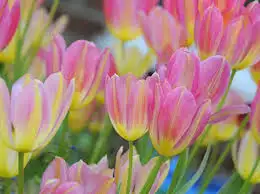
Alisa’s Dream is a beautiful variety of tulip that has a creamy pink color with a faint rose hue. It’s a great option for gardens because it blooms early in the season (usually around mid-April) and grows to be about 12-14 inches tall. This tulip is classified as a late-bloomer, meaning it will bloom in late spring or early summer. It’s a perfect addition to any garden, and will add a touch of elegance or splash of color and beauty to any landscape.
Greigii tulips

Greigii tulips produce single bowl-shaped flowers in early to mid spring. The principal colors are red, yellow and white. Combined with their stunning spotted and striped leaves, these flower colors create an unforgettable visual impact. These qualities make Greigii tulips unsurpassed for use in borders, rock gardens, and in pots. Very reliable perennials, these tulips are low growing in nature. With purple striped or spotted foliage and big bright flowers they pack a lot of interest in a small space.
Apeldoorn

If you’re looking for a tulip that has a really unique shape, you should try the Apeldoorn. This tulip has a trumpet-like shape that’s really elegant and eye-catching. It’s also a great option if you’re looking for a tulip that will last for a while. The Apeldoorn tulip can last up to two weeks, making it a great choice for a longer-lasting display.
Darwin Hybrid Tulips
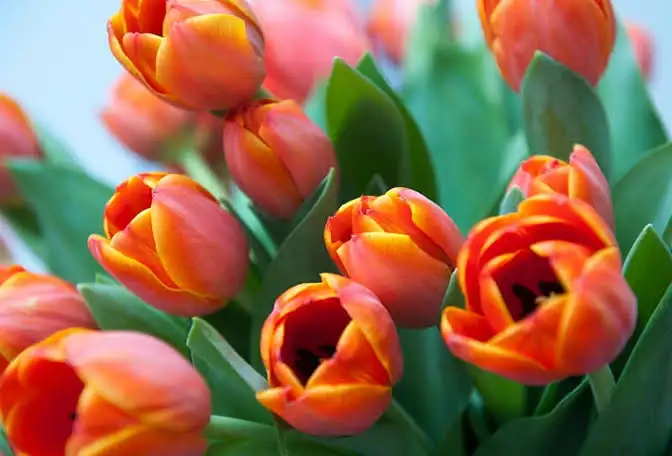
These tulips were developed in the Netherlands by crossing the famous Tulipa fosteriana ‘Madame Lefeber’ (also known as ‘Red Emperor’) with various cultivars from the group of tulips then known as the Darwin tulips. The result of this cross-breeding was a series of tulips that excelled due to their flower size and sturdy, long stems. The egg-shaped, single blooms, are available in a wide range of colors including orange, red, yellow and pink varieties as well as varieties with differently colored speckles and stripes on their petals.
Double Late Tulips
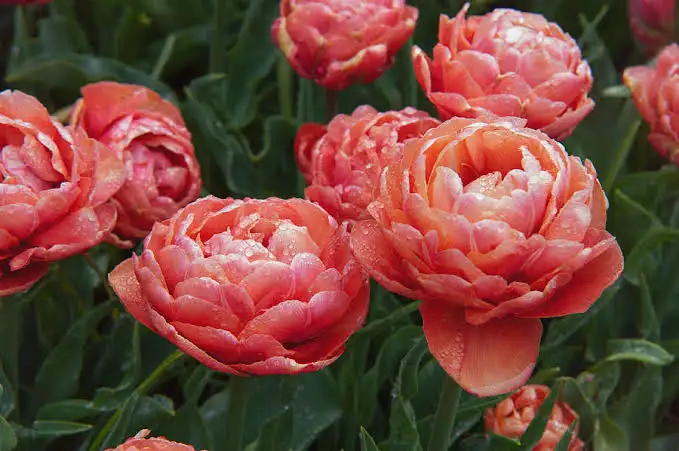
Double tulips have large long lasting blooms that are excellent cut flowers. Double Late Tulips introduce romance and elegance to any garden. Their large, double-petaled blossoms are full and delicate, resembling peonies. These easy to grow bulbs bloom in late spring and are available in rich, single- colored varieties, bold bicolors, and gently tinged two-tones. Double Late Tulips perform best when sheltered from the wind and when planted in groups.
Red Riding Hood Tulip
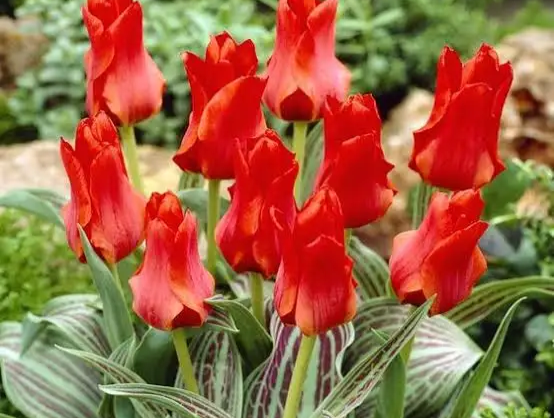
The tulip is a beautiful flower that can add color and life to any garden. There are many different varieties of tulips, so you can find the perfect one to match your garden style. If you’re looking for a pop of color, Red Riding Hood is a great option. This variety has brilliant red blooms that will add a splash of excitement to any garden. If you’re looking for a more subtle addition, consider planting Holland’s Triumph. This variety has soft pink blooms that will complement any garden. With so many different varieties to choose from, you’re sure to find the perfect tulip for your garden.
Triumph Tulips
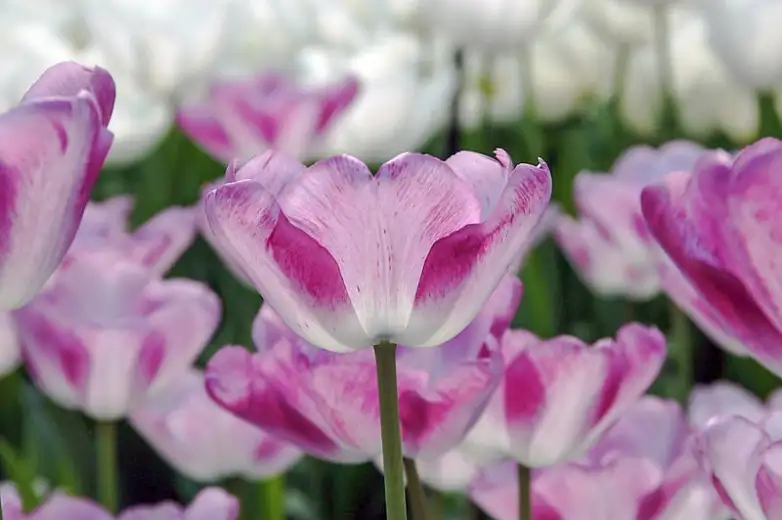
Triumph Tulips are by far the largest group of tulips, including many different cultivars. Growing only 10-16 inches tall on sturdy stems, they withstand April’s showers and offer a vibrant display of colors in the garden in mid to late spring. Flowers are single and cup-shaped and bloom in an endless assortment of colors. Triumph tulips are among the best tulips for forcing.
Single Early Tulips

Single Early Tulips are fabulous as bedding plants and for forcing in late winter. They are some of the earliest flowering tulips, blooming after Fosteriana or Kaufmanniana tulips in the early-mid spring garden. They enjoy very strong stems that withstand wind and rain and feature single, cup-shaped blooms, about 3 inch wide. Mid-sized, they offer a rich variety of colors, from white to dark purple, and are often margined or flamed with a contrasting color.
Fosteriana Tulips
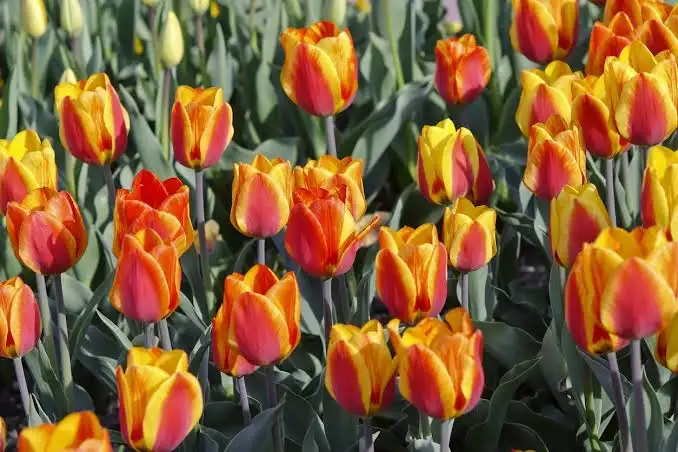
Emperor Tulip bulbs or also known as Fosteriana Tulips produce gorgeous flowers. Plant Emperor Tulips in the fall and enjoy blooms early in the season, year after year. Fosteriana is a wild species found in the mountainous areas of Central Asia. Although no longer being cultivated, numerous beautiful cultivars developed from it are still marketed. They differ from one another in height, but all have solitary, bowl-shaped flowers, 5 inch wide with a slender shape and large, sometimes striped, leaves.
Lily-Flowered Tulips

What makes Lily-Flowered Tulips different from other tulip varieties are their slender flowers with often pointed, recurving petals. The flower stems are thin and not very sturdy, making them susceptible to wind damage. Most bloom in late spring, a few in mid spring. Some make good cut flowers, others are fragrant. But all are incredibly beautiful and should be considered in your seasonal plantings.
Viridiflora Tulips
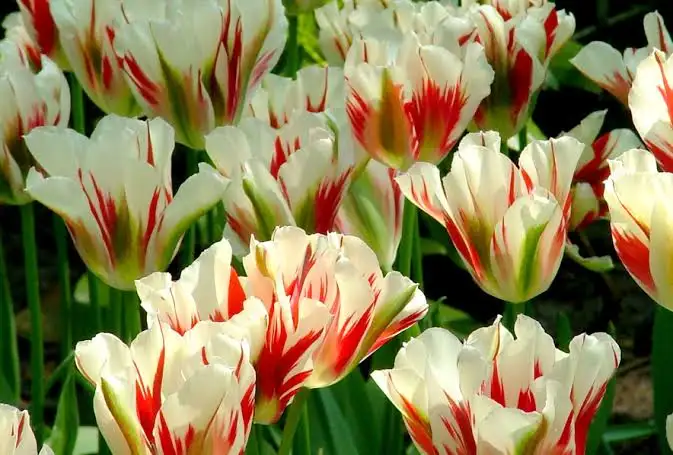
The name “viridiflora” is a combination of the Latin words for green and flower. What makes these tulips so fascinating is that their petal color includes green, in stripes or flames on the back of the petals. Their overall bloom shape is cupped, to about 3 inches across. The other colors vary, but all viridiflora tulips flowers have this unique coloration of green. Viridiflora tulips are also notable for the fact that their flowers bloom later in spring and that they can last up to three weeks, and typically look ravishing in a vase.
Single Late Tulips

Single Late Tulips include cup- or goblet-shaped flowers and are among the tallest tulips with the Darwin Tulips. They can be found in almost any color related to tulips, including some extremely unusual bicolored varieties. Blooming in late spring, after all other types of tulips have finished, they enjoy sturdy, long stems that withstand wind and rain. Lovely along a garden’s edge, in a rock garden or underneath still sleeping perennials.
Multi-flowered Tulips
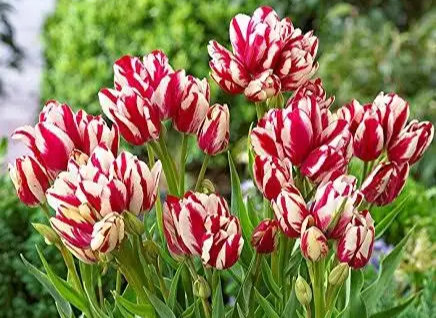
Multiple flowering tulips (also called multi-headed tulips) feature many blooms per stem, making them a unique addition to the spring garden. While tulips traditionally produce one flower per stalk, these overachievers send up four stems per plant, at minimum. Perfect for those who enjoy tulips as cut flowers, as well as for small-space gardeners looking to maximize the amount of color in their flower beds.
Kaufmanniana Tulips
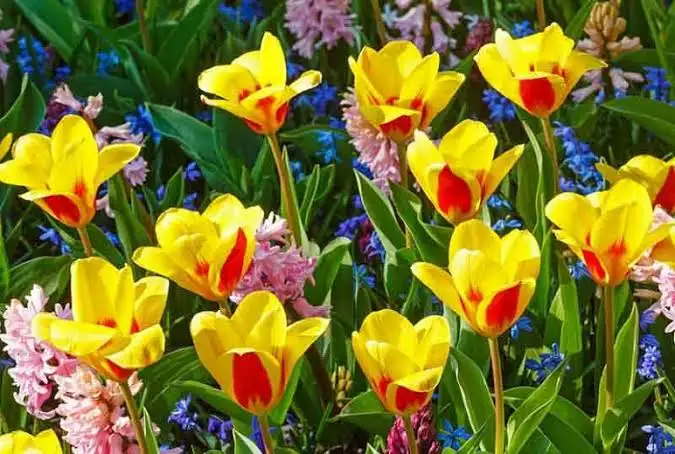
These tulips are noted for their brightly contrasting colors. The flowers open wide during the sunny hours of the day providing an entirely different color effect than when closed. The flower shape also changes dramatically; when open they resemble a shining star. Blooming in superb combinations of red, rose and golden yellow in early to mid spring, these showy prima donnas are low growers at 6-12 inches tall and are ideal in rock gardens or containers.
Double Early Tulips

Double Early Tulips have short stems with fully double flowers which can be up to 8 cm across giving a paeony like appearance. The flowers are long lasting and well suited for cut flowers. They come in a wide range of colors ranging from red to yellow or white. They often exhibit a contrasting color, offering a striking display in the garden in early – mid spring.
Cynthia Tulip
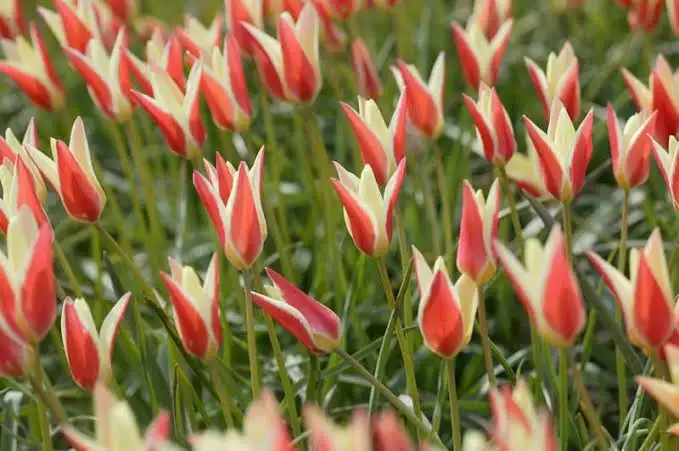
Long-lasting, Tulip ‘Cynthia’ is a lovely bi-color tulip that will make your heart race. This heirloom tulip sends up gray leaves and eye-catching pale yellow flowers delicately flamed rose-red. The blossoms close at night or on a cloudy day, but are completely opened on sunny days, forming a perfect star.
Wildflower Tulips
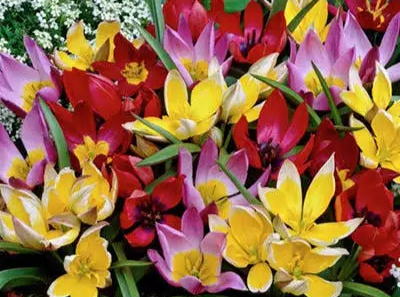
Also know as species tulips, these low-growing beauties are long-lived and hardy flowers that can withstand stormy spring weather. These pring flowering bulbs are outstanding companion plants to mix into your perennial flower beds.
Botanical Tulips
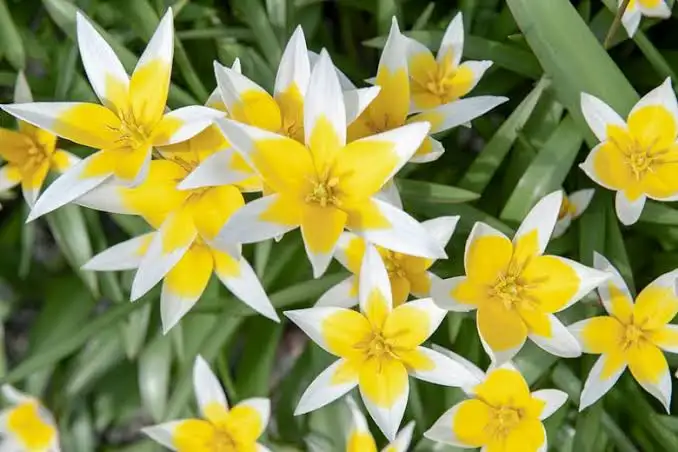
Botanical tulips have a natural look. They stay nice and close to the ground, and they seem to be in flower as soon as they emerge from the soil. Their bright colors make them real eye-catchers in early spring. The striped leaves of many varieties make these even more appealing. And another important thing: these ‘wild’ tulips won’t be bothered by wind and weather.
Conclusion
There is a tulip for every taste and style, and the possibilities are endless. Each variety of tulips can be planted to suit your garden’s conditions, making them even more attractive. Whether you love bright colors or soft hues; short plants or large blooms; big petals or small; there is a tulip out there that will suit your garden perfectly!